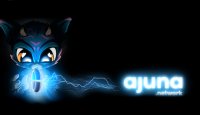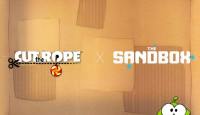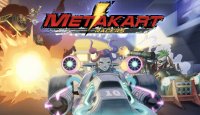“There are three significant problems in the NFT field, more prominent than just infrastructure.”
On December 5, the 2020 World Blockchain Conference in Wuhan officially opened in Wuhan International Convention and Exhibition Center. The conference was hosted by 8btc and received strong support from the Wuhan City Government, the Jianghan district government, the Wuhan Economy and Information Bureau, the China Institute of Information and Communication, and many other departments.
In the afternoon of the Blockchain 3.0 Forum, MixMarvel CSO Mary Ma delivered a speech entitled “Taking over DeFi and becoming the next large-scale application, NFT lacks more than just infrastructure.” Mary Ma pointed out that the virtual world’s future requires infrastructure, standard protocols, economic systems, and new organizational forms. MixMarvel’s new products LeCube and Rocket Protocol, combined with NFT protocols and communities (in the form of UGC and DAO), will constitute the blockchain games space’s future.
Mary Ma also mentioned three significant problems in the current NFT field: the immaturity of the pricing mechanism, the degree of coding that is not sufficient, and the loss of consensus. These are the problems MixMarvel is trying to solve.

Following is a collection of brilliant thoughts from Mary Ma during her speech:
Hello, I am Mary Ma from MixMarvel. We mostly focus on the blockchain games space.
We couldn’t be here during Roham Gharegozlou’s speech just now. We feel quite sorry about it. We are very familiar with the Dapper Labs team, as our philosophies are very similar. MixMarvel also started from a self-developed trend game, continued to explore blockchain games, and built our own wallet. Now Dapper Labs launched their public chain while we are about to launch a Layer-2 Scaling Solution.
We also have a very close relationship with 8btc’s World Blockchain Conference. Last year’s conference went under the “Application Unbounded” theme. We shared many self-developed games and game release experiences at the conference. We completed the docking with Alibaba’s Ant and released the first blockchain mass-oriented game, “Alipay-ver. HyperSnakes” on Alipay. At the beginning of this year, HyperSnakes boarded the Alipay home page, showing Wuhan the support during the pandemic.
This year’s conference theme is “Believe in the Future.” I think it is very appropriate for us today to share our views on the future of blockchain and the entire entertainment technology industry. Share what we hope to do to make this future come true.
What does the virtual world need in the future?
First, let me slightly introduce MixMarvel. We are a group of mainstream game veterans from Ubisoft, Tencent, and South Korean T3. For a long time, we have been fighting in the mainstream game industry and witnessed many technological innovations to bring explosive growth in the field. Each time technology migrated from the host game to PC, to the web, then to mobile games, technology brought dozens of times’ of growth to the industry. We believe that if blockchain technology is better combined with games, it will also bring disruptive innovation.
In 2017 we entered the blockchain field. At the beginning of 2018, the first version of our first game, HyperDragons, was released on Ethereum. In August, we obtained first ranks in many data aspects, starting with user quantity to transaction volume, followed by the release of HyperDragons’ multi-chain Ontology version. We also released a multi-chain version and an Ant version of HyperSnakes. Later, we did cross-chain distribution for the №1 game Crypto Throne on EOS. At the peak, half of the DappReview Top-20 Games were developed or released by us.
From then on, we kept discussing what we thought the future would be like. We started talking about this topic as early as 2017, and by now, we have summed up several thoughts on it. For example, we think the future world must be an open one. Therefore, we have created the Marvel Universe concept, a Mix-merged universe, where users can procreate, share assets, and build communities together. This is our imagination for the future. What makes us happy is that this image has not changed. Standing here three years later, we believe that the future blockchain technology and entertainment field will still be such an open world. What is different, in any case? We feel that the world drifted a little far away, and there is still a lot to make up for.
This year, another difference is that we have found many big shots and events in the mainstream field, confirming the virtual world’s future. Whom am I talking about? Tim Sweeney, founder of Epic Games. I don’t know if you’ve ever played Fortress Night, the most popular game in the world under construction overtime, but there you can build freely and play PUBG at the same time. This is the core play method. Apart from this masterpiece, Epic Games also has a core product, Unreal Engine. Unlike Apple, which only does stores, and Google, which only does algorithms, Tim Sweeney is more open-minded about the future world. He thinks that the future will be a meta-universe. The concept dates back to 1992 and has been depicted in the science fiction avalanche. Blockchain practitioners present here are very familiar with this scenario. What is it like? In such a world, we earn digital assets, work, live there, and even get married. It’s a bit like the world of Ready Player One, which came out a couple of years ago.
Though standing in mainstream games, Tim Sweeney summed up three characteristics of the virtual world. First, let the market decide the share ratio and gradually open the core cost. He spurs on Apple and Google for charging 30% for apps downloads, which is very unreasonable. Based on our experience, we only need 5% — 7% of the cost to run a store, so Epic Games only charges 12%. Whether he’s trying to promote the app store, or he’s ambitious, at least we think this is a man who is trying to tear open a hole in the mainstream industry. We need to pay tribute to him.
Second, he believes that the meta-universe is not developed by a monopolistic company and needs many builders to build it together. Third, the meta-universe needs to allow fair competition. This should not be a 3D world with an open API interface, allowing developers to call and build the world according to existing rules. Instead, it must let more developers take the initiative and get a reasonable distribution of benefits. I don’t know if you feel familiar with these three points. Blockchain practitioners think these three points of view are confirmed to fit their taste.
To interpret these views from the language of blockchain is to say the following things. The virtual world needs infrastructure, standard protocols, economic systems, and new organizational forms in the future. Some of the core ideas are still missing. As for infrastructure, people have been talking about it very much recently, for example, Polkadot and Ethereum 2.0. We don’t think the vertical solution of the entertainment industry is complete enough.
As for the standard protocol, most of the NFT standard protocols are still ERC-721, and most of them are based on the extension of Ethereum 2.0. Its application in more complex and rich scenarios is relatively thin. It makes the issues of the economic system self-evident. When you buy NFT, how do you do it? For example, do you buy it directly at the official price or through bidding? These sales methods are single for the whole pricing system because they may be the official sale of their pricing or the auction price formed through a few people’s games. However, the consensus on these prices is minimal. It is easy for many people to criticize the lack of NFT field development and liquidity and the weakness of its basic consensus. These are all due to the lack of an economic system. The economic system also includes how to produce raw materials, transfer, position participants’ roles, and distribute benefits. Finally, we have a relatively straightforward answer about the organization form. It must be the user UGC community or DAO organization. Several people or teams will not monopolize it.
We have made some effort to solve these problems that we need in the future. For example, Rocket Protocol, which is still to be mentioned today, is a Layer-2 Scaling Solution. But our next critical promotion project will not only be Layer-2 but also LeCube.
LeCube: Turning user innovation into assets
First of all, let’s talk about LeCube. Go to LEGO’s booth and feel it. The whole process of building is what we will show in real-time in LeCube in the future. Every piece you build is an on-chain asset, and the NFT you create, the process and the result of it, are all on-chain. What’s the benefit of that? We’re going to talk about why we think NFT has not yet become the next DeFi.
Whether we do games or applications, we will come to a similar conclusion. That is, NFT is the most crucial core asset. Games, art exhibitions, and virtual worlds are all the application scenarios of NFT. This may be a little abstract. For example, IP (Intellectual Property), Pikachu in IP has an adorable image widely welcomed by the public. You can use Pikachu to make movies, and you can also use it to draw animation; you can also use it to create the surrounding. In a word, the image of Pikachu is its core.
You can continuously expand various applications in its extension. NFT is the same thing. The perfection of NFT, the infrastructure, determines the extent to which these applications at the upper level can be enriched. What’s wrong with NFT now? The first is the lack of a mature pricing mechanism, price discovery, and value circulation. The second is that the coding level is not prominent enough. Users may not feel it very much, but practitioners will feel a bit deeper. For example, when you create an NFT, more code is in the token layer itself. For instance, ERC-721, in addition to the nine methods in ERC-20, makes a random number arrangement to generate different NFTs. However, these are not interactive with users in the background. The interaction between the foreground and users stays in the centralized server of each project.
For example, we play Dahua Journey To The West. Suppose the asset of the blockchain version of Dahua Journey To The West is NFT, and I purchased a Tiffany equipment worth 100 Ethereum. Suppose I buy, I play for a while, the server has a bug, or the project is suspended, then my 100 Ethereum skin disappears. For users, it is insensitive when it doesn’t happen. However, it tempers with the longevity and vitality of the application. It prevents assets from genuinely reflecting the nature of assets. Therefore, the degree of coding is not prominent enough. Blockchain applications’ service life is not long enough, and many applications are still isolated islands of data and assets. As long as the front-end wants to get through with each other, it must be official to do various program calls, API interface docking, and business negotiations. It is impossible to form a scale like DeFi that can be assembled to produce the LEGO system at will.
The third is that consensus will quickly drain away. Because of the mode of official sale and low degree of coding, this consensus will be lost. We know that we are trying to let users generate NFT tools. We encounter users who download an image directly from Baidu, generate NFT, and put it on OpenSea for sale. Then, who owns it? So these are the problems.
Why did we choose LeCube? There is quite a story to it. I don’t know if anyone who entered the blockchain industry in the early days, such as 2017, heard of LeBlock. “LeBlock” was the UGC community’s product. We appreciate this team very much because its concept coincides with ours. We both hope to boost user creation and community. However, the technology was relatively weak. It did not do much interaction on the chain and did it a centralized service. The biggest problem with centralized products is that they can easily be reduced to services. If the services can not cover the project expectations, they will be quickly shut down. This year, we have acquired the IP of LeBlock, which will be jointly developed by developers all over the world in a very decentralized process. We are thrilled that LeCube will be released as a new upgrade on the chain early next year.
Here you can see the achievements of LeBlock at the time (Pic. 1). It attracted more than 60000 users, more than 20000 active users, and produced tens of thousands of works in five weeks. There was also a trading function at that time, but there was less interaction with the chain. Here are a few pieces you can enjoy (Pic. 2). Some users have built 3D cars, a Trump, and now they can put together a Biden. The third user created a future city. At that time, there was a reference function in LeBlock, so the fourth user had a remarkable effect on the destruction of the future city. The users’ imagination was vast. We feel that these users’ creations are precious, and we are willing to help them go on the chain and let these ideas become assets.


LeCube has several features: quantifiable NFT, visual NFT, and the foundation of native NFT. What is quantifiable NFT? It interacts with FT at the beginning of its creation. After NFT is formed, it can be priced by quantifiable FT. At the same time, we use FT to price the commonality of this NFT. Therefore, the first two steps have a measurable process. Since quantifiable, it can form peripheral financial applications, such as leasing and mortgage lending.

Visual NFT is very difficult to understand. For example, suppose the Bitcoin network is a DOS system. In that case, we can operate this DOS system by inputting the command line. Now Ethereum has a virtual machine, which is similar to Windows. At present, the functions of Windows are insufficient. For example, you can write documents now. Like the various FT applications, the DeFi application is like your documents; it can be overlapped and referenced. What we hope for LeCube to become is a drawing software on this Windows. All visual objects are created through LeCube. At the same time, your pictures can be quoted by ABCD regularly, which is the visible entrance of the future virtual world. These are our expectations for LeCube.
Based on natural assets, DeFi has the advantages of all the existing assets of Ethereum. NFT doesn’t, so from LeCube, every element, work, and process is a native blockchain asset. First of all, the asset itself will be a top-level facility. Now we are drawing software, and we do not have various special effects applications. More community developers contribute a few code lines to make dynamic effects and move actions, including financial derivatives. In fact, in the development process, those functions that can be abstracted will precipitate richer underlying protocols.
For example, I don’t know how many people use the web version of the digital wallet MetaMask, which is purely decentralized. When the user clicks the mouse, the fox’s head will move according to your mouse. If you put together the image on the LeCube, use the wallet to read your NFT assets. As long as the image’s front-end completes a concise code analysis, the front-end image will be displayed as the head portrait you spell and move around with your mouse. It is indeed a tiny application. Or, you want to carry it out in The Sandbox. These NFTs can be called to other applications at any time, which can significantly improve interoperability. In other words, it can be visualized in more decentralized applications.
What is the core idea of LeCube? We have just mentioned much of it. For example, “Code is Art,” copyright self-proof, and community creation. We will not leave it to the team or the official, but we will give the community raw materials and creative rights. What are we going to do? First of all, we will open-source the code when the product goes online. Secondly, we will build a community. These are the two core points of LeCube.
LeCube is more interactive with users. What is the underlying support for it? People in the industry will say that according to the performance of Ethereum, it will cost tens of RMB to spell the last link of NFT randomly, which is certainly unreasonable. Therefore, we have made our scaling solution, Rocket Protocol, and will launch it into the market together with LeCube. This year, DeFi has given us much inspiration. According to our route in 2019, we may change along with the mainstream game or entertainment industry chain. However, this year’s explosion of native blockchain applications shows us the ability of native blockchain applications. We also think that there will be more peers. They will need a more robust infrastructure, so we decided to open the Rocket Protocol, which has been used since 2019 when we cooperated with the Ant Financial Open Chain. After the function improvement of the Rocket Protocol this year, it will gradually open-source the code.
Rocket Protocol: focus on vertical industry
First, the integrated structure of bridge and cross-chain: when it comes to cross-chain and assets bridging, many Layer-2 Solutions have already done it. Our most prominent feature is structural integration. There is a consensus mechanism of multi-signature in the cross-chain process. So assets are very secure when they cross the chain. Second, integrating NFT and NFT-Fi protocols. There is a new concept in this. NFT-Fi protocol is the function of NFT + DeFi that we are talking about recently. The protocol abstracts the most essential and most demanding applications first. NFT-Fi will have the most basic transaction, auction, leasing, and other functions. Integrating NFT, we are compatible with most of the mainstream NFT protocols on the market. We attach great importance to the reusability and inheritance of assets. The most significant function of NFT is like the example of it. To reuse across scenarios, users can be aggregated through different NFTs, and each scenario is enabling the NFT asset itself. Therefore, we add this operability to the data structure. Based on ERC-20 and -721, we define different scenarios’ data structures to support asset reuse and inheritance.
This vertical industry mainly refers to the current game industry. Our virtual machine is a question and answer system. We don’t have to wait for six blocks to see which block should enter the public chain sequence. Therefore, it can significantly solve the problem of high concurrency and many actions coinciding. Compatibility, mainly because our EVM can be directly connected to the EVM of Ethereum. If the DAPP of Ethereum needs to use Rocket Protocol, it can be migrated with one click. Ease of use mainly refers to the developers having a complete set of toolchains. In terms of helping everyone focus on their DAPP itself, the completeness is excellent. The following is a simple scheme. We can see the cross-chain identity and consensus mechanism of REVM, NFT data structure, cross-chain identity and consensus mechanism of multi-signature, a VRF + BLS consensus mechanism for arbitrary numbers of multiple recombination signatures, and the cross-chain and interaction mechanism between us and each public chain.

Finally, our Layer-2 Solution integrates the whole mechanism organically. We will open up more functions and hope that the community can build with us in the future. This honeycomb is the core idea of our Rocket Protocol. Every side of it can interact with each other.
That’s all for my speech today. Welcome to the LeCube exhibition area for more experience. When the product is launched, there will be a lot of interaction and airdrop activities for you. Thank you for listening.
MixMarvel Community:











